Speaker
Description
Groundwater level time series are crucial for various groundwater-related studies and can be used to link patterns in groundwater levels to environmental factors. However, historical datasets often contain gaps and errors, leading to false results or large uncertainty if not properly treated. In this study, we present a comprehensive work on error treatment and gap imputation in the long-term groundwater level monitoring datasets, as well as groundwater level pattern linkage to environmental factors.
The first objective of this study is to prepare groundwater level time series obtained from the national monitoring network in Latvia, Estonia and Lithuania for groundwater modelling studies. To achieve this goal, we identified the most common data errors found in long-term groundwater level monitoring datasets, presented techniques for visually detecting such errors, and proposed effective methods for treating them. Additionally, we included confidence levels to aid in the identification and decision-making process.
The second objective of the study is to impute missing values in groundwater level time series. We investigated the impact of missing value patterns on the performance of gap imputation methods commonly used to deal with regional-scale datasets. We present a new typical gap pattern introduction technique that mimics realistic gap patterns characteristic of regional-scale groundwater hydrographs. We applied this approach to groundwater level time series covering all three Baltic states and compared the performance of missForest, imputePCA, and linear interpolation. Our results showed that missForest significantly outperformed the other methods but struggled with imputing previously unseen extremes and anthropogenically affected time series.
The third objective of this study is to identify clusters of patterns in groundwater level dynamics in the Baltic region and to link these patterns to environmental features. We used backward variable elimination approach and random forest algorithm to reveal the most important features that govern groundwater dynamics in the study area. The results showed that clusters show a spatial pattern that can be linked to various features. The most important features for the clustering were mean groundwater level, temperature, precipitation, and relative position of the well, while some Soilgrids and Hydrogrid features also show importance.
Our approach provides valuable insights into groundwater dynamics in the Baltic States and can serve as a basis for sustainable groundwater management.
Acknowledgements:
This research is funded by the Latvian Council of Science, project “Spatial and temporal prediction of groundwater drought with mixed models for multilayer sedimentary basin under climate change”, project No. lzp-2019/1-0165; Ministry of Education and Science, Latvia and University of Latvia grant No. ZD2016/AZ03 “Climate change and sustainable utilization of natural resources”.

